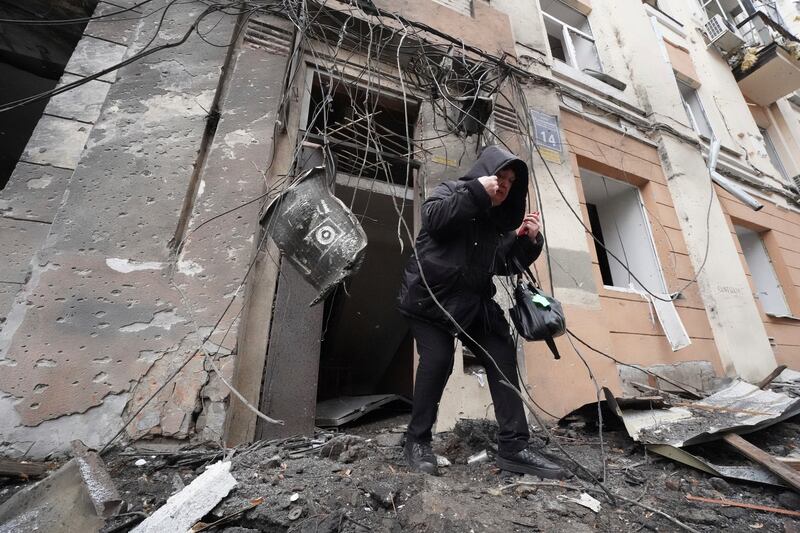Feb. 24 will mark the first anniversary of Russia’s invasion of Ukraine, and Russian President Vladimir Putin is currently amassing hundreds of thousands of troops for a renewed surge to annex most or even all of Ukraine. After a recent meeting in Paris with Ukraine President Volodymyr Zelenskyy, French President Emmanuel Macron has declared that the war in Ukraine is morphing into a “European” conflict.
I have lived in Europe for extended periods since my church mission to France in the mid-1960s, and later served as a Fulbright professor at the Sorbonne and the University of Helsinki. I am currently residing in Paris conducting research on trans-Atlantic relations. Over the past half century, I have never witnessed some European colleagues so worried about the prospects for a major conflagration on their continent.
Much could go wrong. If successful in subjugating the Ukrainian people, Putin may push on to the Baltics and other territory close to Russia’s vast border. Unlike Ukraine, all three Baltic republics are members of NATO, and a Russian incursion would trigger Article 5 requiring all 30 NATO members, including the United States, to defend the besieged countries.
Thus far, Ukraine has fought valiantly and Russia ineptly. However, perhaps a third of Ukraine’s gross domestic product is gone, with massive casualties and infrastructure deterioration. Neighboring Russia is three times larger in population and nine times larger in GDP. It is a military superpower with a stockpile of over 6,000 nuclear weapons.
To dissuade Putin from further reckless pursuits, the European members of NATO and EU countries must strengthen their sanctions against Russia and combine this with much greater financial and military support for Ukraine. Thus far, the lion’s share of tangible contributions to Ukraine has come from the United States, with Europe trailing behind.
The major Western European countries are facing significant domestic challenges. The United Kingdom has weakened continental unity by divorcing itself from the EU and now confronts formidable political and economic challenges. President Emmanuel Macron in France is facing persistent domestic unrest stemming from his efforts to increase the retirement age of French workers from 62 to 64. Germany’s Chancellor Olaf Scholz has bravely pledged to revamp his nation’s foreign and defense posture, the Zeitenwende, but so far implementation has been slow. German military forces are a shadow of what they were during the height of the Cold War, as former Chancellor Angela Merkel slashed defense budgets, relying instead on the U.S. to bear much of the burden for protecting Europe from potential enemies near and far.
In the United States, some political figures and prominent commentators are questioning the primary role Washington has assumed in buttressing Ukraine’s defense against the Russian onslaught. Historically, the U.S. became engaged very late in Europe during World War I, beginning to dispatch troops in April 1917 with the war ending in November 1918. Total U.S. war-related fatalities were 116,000. The U.S. also entered World War II only after the Japanese attack on Pearl Harbor in December 1941. This war in both Europe and the Asia-Pacific region resulted in 420,000 American deaths.
A poignant moment for me was taking my BYU students to the American Cemetery in Normandy in the autumn of 2007. This beautiful cemetery is on a bluff overlooking Omaha Beach and not far from Utah Beach, the two principal landing places for U.S. troops on D-Day in June 1944. This is the final resting place for over 9,000 American heroes who traveled so far to defend innocent people from Hitler’s quest for total domination of the European continent.
Almost 80 years after D-Day, Americans may once again be asked to cross the Atlantic Ocean to help thwart the machinations of another brutal dictator desiring to expand the boundaries of what is already the world’s largest nation territorially, spanning 11 time zones.
Ideally, a united NATO and EU stance against Putin would lead to a relatively peaceful compromise in Europe, or the removal of Putin from the Kremlin by his own people. However, this painful episode illustrates that the 600 million people sharing a continent with Russia must do far more to defend their own territory against internal and external threats. America’s NATO commitments will buttress this quest, but the greatest burden ultimately must be borne by the Europeans themselves.
Earl Fry is professor emeritus of political science at BYU and former special assistant in the Office of the U.S. Trade Representative in the Reagan administration. He currently resides in Paris, where he is conducting research on trans-Atlantic relations.

